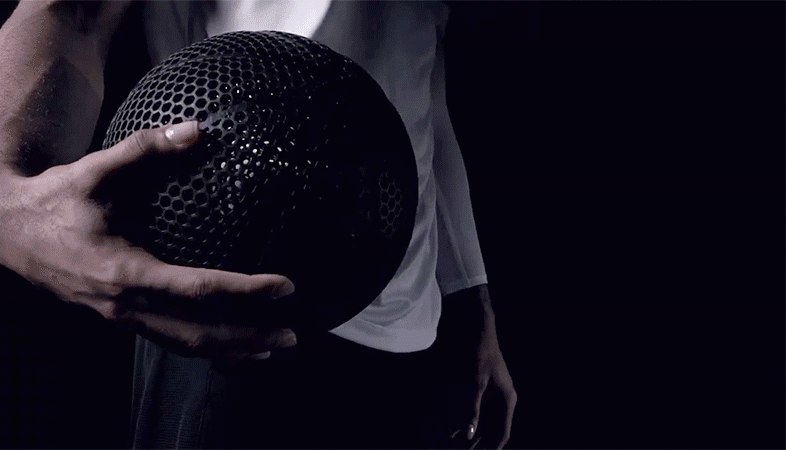If you’ve ever played basketball, you know the frustration of a flat ball. Wilson has been working to redesign the basketball with a prototype that is covered in an intricate pattern of holes but never goes flat because an air pump with a properly sized needle isn’t something most people carry around with them all the time.
The term “airless” basketball is commonly used to describe the technology that eliminates the need for pressurized bladders in objects meant to bounce or absorb impacts, despite being a bit of a misnomer given that air can still pass right through it.


Twelve years before Wilson brought the technology to the court, companies like Bridgestone were working to develop airless tyres for vehicles; these tyres made their debut on a tiny single-seater vehicle at the 2011 Tokyo Motor Show. Bridgestone’s airless tyres provide a comfortable ride without the need for a constant supply of air by employing a network of plastic resin spokes that can deform to absorb impacts while still allowing a wheel to maintain its shape and roll.
Bridgestone’s Airless Tyres
However, Bridgestone’s airless tyres have had a slow introduction, seeing use primarily on ATVs, some military vehicles, and bicycles. Despite the technology’s promise, it has been difficult to develop safe airless tyres that can be used in all conditions, including snow. In contrast, a basketball will never be called upon to carry the weight of a car carrying five people at eighty miles per hour through the snow.
To produce the unconventional basketball design covered in a pattern of open hexagons instead of sealed leather panels, Wilson collaborated with a company called EOS, which specializes in the use of 3D printing for industrial uses including medical and aerospace applications.
Rather than stacking layers of extruded molten plastic, EOS relied on additive 3D printing, which uses a powdered resin hardened by a laser to create ultra-thin stacked layers with even more detail. The finished product is a hollow ball that comes very close to meeting the “performance specifications of a regulation basketball, including its weight, size, and rebound (bounce)” The 3D-printed ball can even be dyed in different colors; the prototype was made all-black for its debut at the 2023 NBA All-Star Game celebrations this past weekend.
The National Basketball Association has no plans to adopt Wilson’s 3D-printed airless basketball design at this time, but that doesn’t make it a bust. Wilson hopes to refine and perfect the design further. Even if it doesn’t make it to the NBA, it has the potential to make basketball more accessible in schools and parks across the country by eliminating the need for a pump to play the game.




